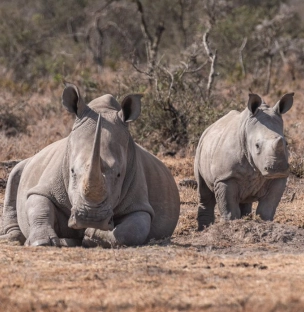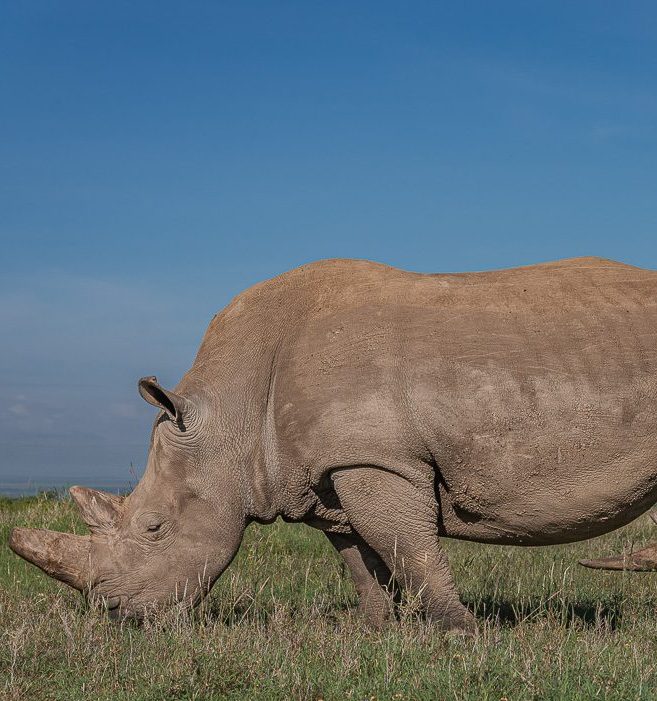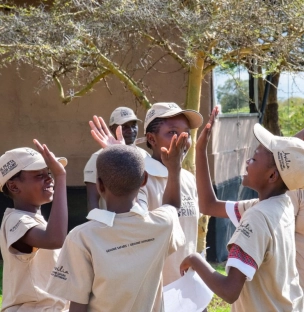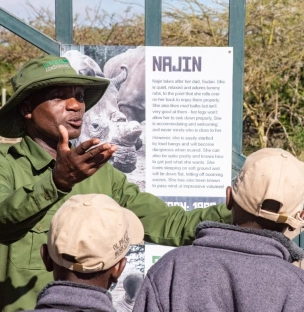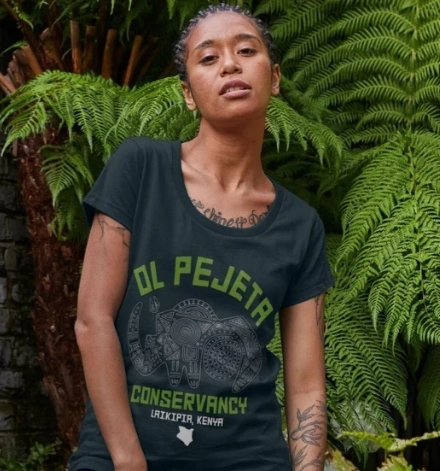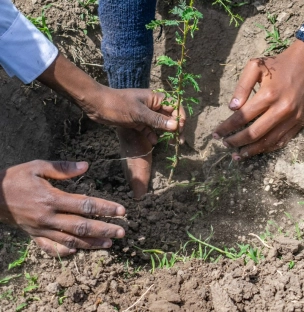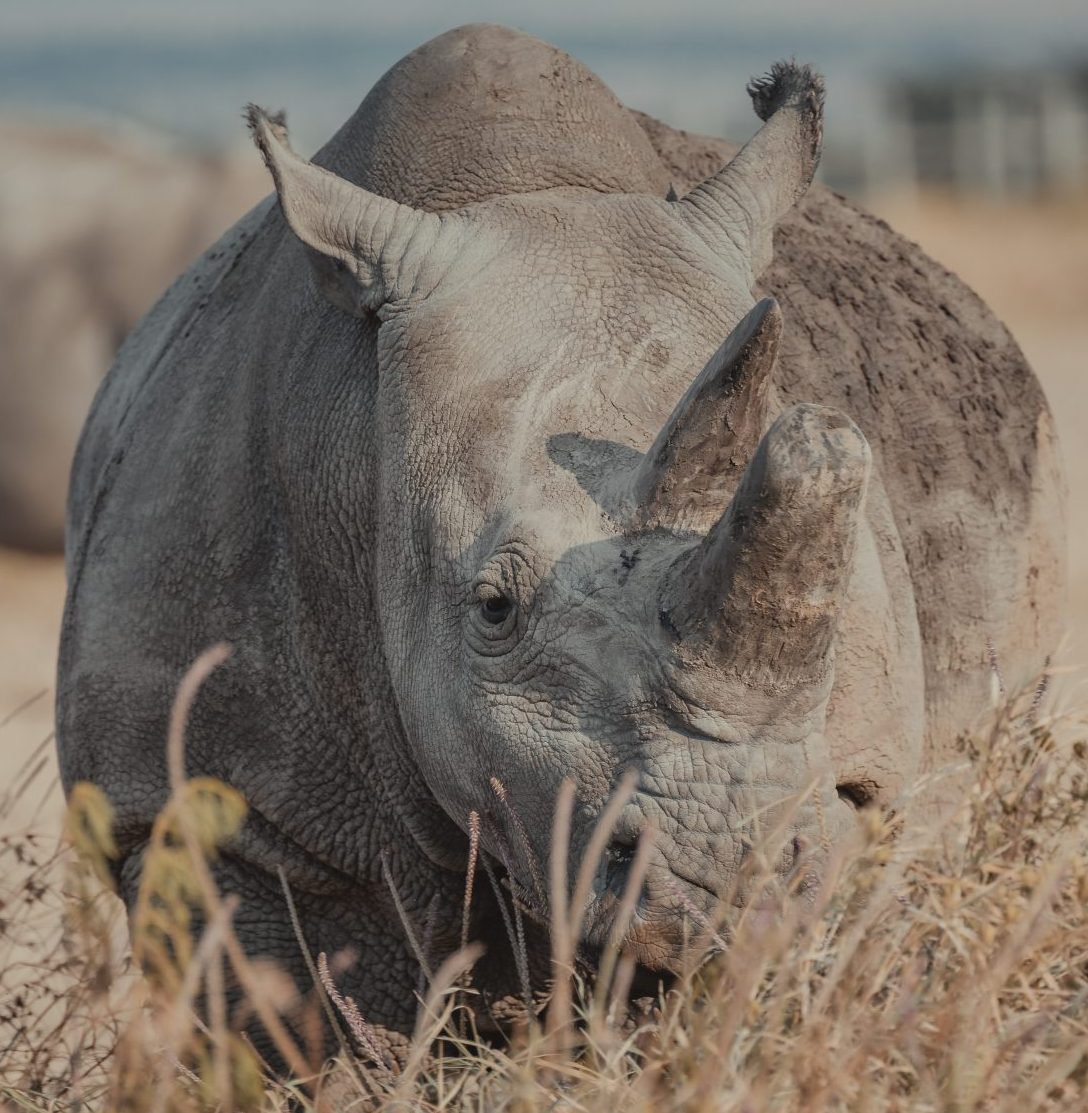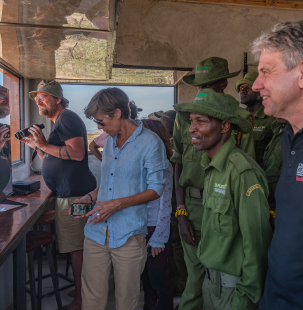Elephants using one of the wildlife corridors to enter Ol Pejeta from the north
CONNECTED LANDSCAPES

Connected landscapes where sustainable natural resource management support biodiversity, endangered species, and people, is the vision sitting at the very heart of Ol Pejeta. Although surrounded by a 300km perimeter of fence line, two wildlife corridors exist in the northwestern sector of the conservancy, connecting Ol Pejeta to Mutara Conservation Area and through to the north. This region is home to Kenya’s second largest elephant population – roughly 7,000 individuals – the corridors enable migration between habitats.
Establishing suitable contiguous areas for conserving large populations has been identified within Kenya’s Black Rhino Recovery and Action Plan, as one of the key components to achieve Kenya’s target of 2,000 black rhinos by 2026. As the largest black rhino sanctuary in Eastern and Central Africa we have met and surpassed our carrying capacity for these majestic animals
However, Ol Pejeta is uniquely placed to drive a contiguous habitat to our north, in Mutara conservation area, and beyond with existing and new private and community sanctuaries that are close to each other. It is also hope that Ol Pejeta can be a source population for new rhino habitats in the region, collaborating to strengthen this iconic species in Kenya.
FOR MORE INFORMATION
CONNECTIVITY GALLERY
The images demonstrate Ol Pejeta's solutions for creating a connected landscape. Roll over each picture to find out more.
Elephant tracks indicating recent passage
A gazelle deploying a unique tactic to pass through the wildlife corridor
Mutara wildlife corridor connecting Ol Pejeta to the north
Fenceline used to keep both people and wildlife safe


